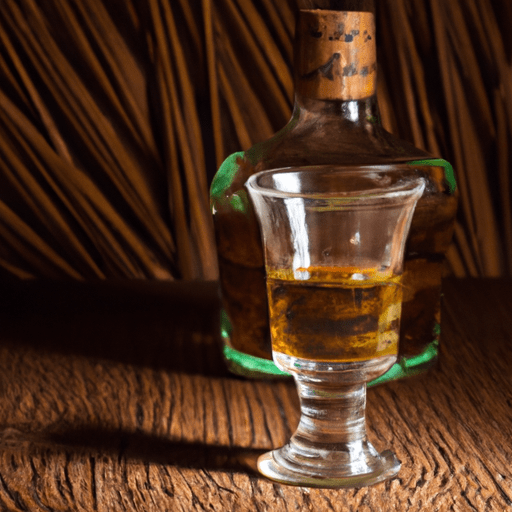Explore the World of Cachaça: Brazil’s Hidden Culinary Gem
If you are an adventurous foodie, always on the lookout for new and exciting ingredients to experiment with, then let me introduce you to a hidden gem: cachaça. Hailing from Brazil, cachaça is a unique spirit that not only delights in cocktails but also brings immense versatility to the world of cooking.
Uncovering the Essence of Cachaça
Cachaça, pronounced “ka-shah-sa,” is a distilled spirit that showcases the vibrant culture and rich heritage of Brazil. Made from fermented sugarcane juice, it is often compared to rum due to their shared origins. However, cachaça possesses a distinct character and flavor that sets it apart.
Taste: Cachaça flaunts a smooth and earthy flavor profile with a delicate sweetness derived from the sugarcane. Its complex taste can range from herbaceous and grassy notes to fruity and floral undertones. Each cachaça has its unique personality, making it an exciting spirit to explore.
Cachaça in the Kitchen: Enhancing Flavor and Creativity
Apart from savoring cachaça in a refreshing caipirinha or other spirited concoctions, this versatile spirit can beautifully elevate your culinary creations. Let’s dive into some of the common uses of cachaça in cooking:
1. Marinades and Sauces: Cachaça’s aromatic flavors make it a fantastic base for marinades and sauces. Its natural sweetness helps to caramelize meats and vegetables, while the slight acidity adds a perfect tang to your dishes. Whether you’re marinating chicken, glazing shrimp, or preparing a tangy barbecue sauce, cachaça will lend a unique twist to your recipes.
2. Desserts: When it comes to sweet treats, cachaça adds a delightful layer of complexity. Incorporating it into desserts like flambés, cakes, and custards infuses a one-of-a-kind taste. The flavors of cachaça can complement ingredients such as tropical fruits, caramel, and chocolate, putting a Brazilian spin on your desserts.
3. Savory Dishes: Cachaça can also take center stage in savory preparations. From adding depth to soups and stews to deglazing pans and enhancing sautés, its presence can subtly transform a dish. Plus, its unique herbal notes can work wonders when incorporated into creamy pasta sauces or even salad dressings.
Nutritional Value: A Balancing Act
While cachaça is an enjoyable spirit to savor, it is essential to understand its nutritional value for a well-rounded perspective.
Cachaça is gluten-free and vegan, making it suitable for a range of dietary preferences. Like many alcoholic beverages, it is important to consume cachaça in moderation to maintain a balanced lifestyle.
Unveiling the Legends and Traditions
Steeped in history, cachaça holds a special place in Brazilian cuisine and culture. Here are a few intriguing facts about this beloved spirit:
Distinct Categories: Cachaça is classified into two categories: unaged (white) and aged. White cachaça offers a vibrant and fresh taste, while aged cachaça showcases complex flavors similar to fine whiskies. Each variety has its charm and diverse application in the culinary realm.
National Spirit: Cachaça is considered the national spirit of Brazil and plays a significant role in cultural celebrations and traditions. One such famous tradition is the Festa Junina, a festive celebration featuring traditional Brazilian food and drink, where cachaça flows freely.
Artisanal Production: Many cachaças are crafted using traditional and artisanal methods, ensuring a high-quality spirit that reflects the passion and expertise of the distillers. This attention to detail results in a truly authentic and flavorful beverage.
With its multifaceted uses in the kitchen and rich cultural heritage, cachaça offers an exciting avenue for culinary exploration. So, why not embark on a gustatory adventure by incorporating this Brazilian gem into your next culinary masterpiece?
Bom apetite! (Enjoy your meal!)
Origin of Cachaça:
- Cachaça is a distilled spirit that originated in Brazil. It is often considered the national spirit of the country and is an essential ingredient in its most famous cocktail, the caipirinha.
Common Uses of Cachaça:
- Cachaça is most commonly used as a base spirit in cocktails, with the caipirinha being the most well-known example.
- It can also be enjoyed neat or on the rocks, similar to other spirits such as rum or vodka.
- In Brazil, cachaça is used in several traditional dishes and desserts, such as the popular dessert called “brigadeiro,” a chocolate truffle made with condensed milk and cachaça.
Nutritional Benefits of Cachaça:
- Cachaça is a distilled spirit made from fermented sugarcane juice, which means it does not contain any carbohydrates or sugars.
- However, it is important to note that like other spirits, cachaça is high in calories and should be consumed in moderation.
Unique Properties and Historical Significance of Cachaça:
- Cachaça is made using fresh sugarcane juice, while rum is typically made from molasses or sugarcane byproducts.
- It is required by law in Brazil to be aged in wooden barrels for a minimum of one year to be classified as aged cachaça.
- Cachaça has a diverse range of flavors and aromas, which can vary depending on the region and production methods used.
- In 2012, cachaça became recognized as a Geographical Indication (GI) product by the European Union, meaning that only cachaça produced in Brazil can be labeled as such in the EU.
- Historically, cachaça played a significant role during the period of sugar cane cultivation and slavery in Brazil. It was commonly consumed by slaves due to its affordability and availability, and eventually became an integral part of Brazilian culture.




Use the share button below if you liked it.
It makes me smile, when I see it.